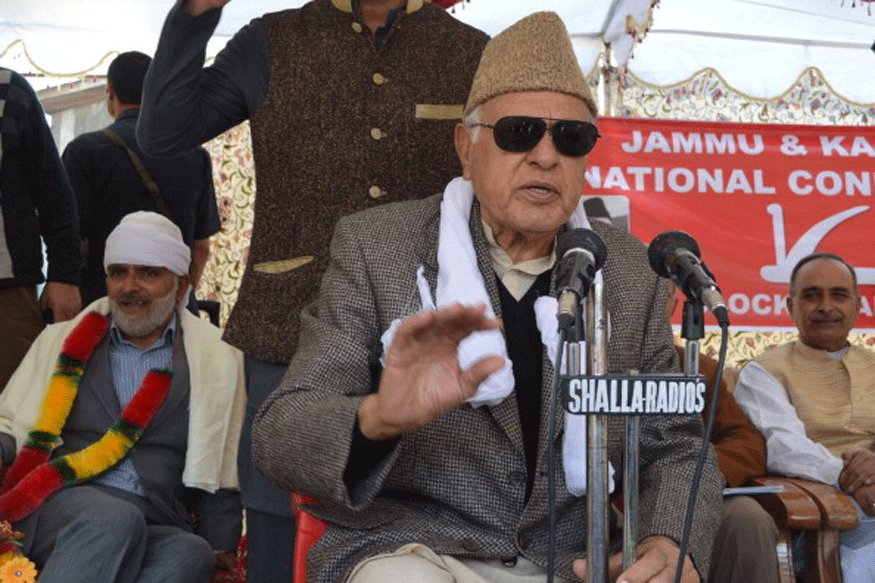Nearly two years ago, when Prime Minister Narendra Modi — accompanied by Japanese prime minister Shinzo Abe — was about to board Air India One to visit Varanasi, he got a call from French president Francois Hollande.
Hollande wanted to inform Modi about the progress made at the 2015 United Nations Climate Change Conference. Modi told Hollande he would call him back after reaching Varanasi.
Modi then called Hollande, heard the text of draft — which was later dubbed the Paris Agreement — and made suggestions and assured him of India's full cooperation. He also committed to go beyond the Paris Agreement.
There were no reasons to doubt Modi’s commitment to environmental protection given the fact that he also authored a book on the issue.
However, what appears to blow all this tall talks to smithereens is the pall of poisonous toxins in the misty haze which has surrounded Delhi this week.
It has become difficult to breathe, not only outdoors but even in homes and offices. Those suffering from allergies, asthma or other breathing problems have been facing the worst with the onset of winter.
The Delhi government has not only asked schools to remain shut, but also advised parents against sending children outdoors. Nothing could be a worse indictment of society as an executive order preventing children from going to school and playing.
In fact, the grey smog that has enveloped Delhi, Haryana, Punjab and parts of Western Uttar Pradesh is an index of callousness and criminality in the country's social and political order that is impermeable to the ordeal that people are going through.
The poisonous haze that surrounds Delhi is a phenomenon that occurs every year. Though the prime cause is attributed to the burning of residue of crops in Haryana and Punjab during October and November, the Union government and the governments of Delhi and the adjoining states always react in a knee-jerk manner. And every time this poisonous climate continues for nearly a fortnight, the impotent rage of the citizens peters out into "business as usual".
Modi assured citizens his government would not put up with the "chalta hai" approach of the past. He reassured citizens there would be discernible change. But the air pollution around NCR is nothing but a reaffirmation of age-old adage: The more things change, the more they stay the same. At political and social level, the leadership maintains an ostrich-like approach to a danger that crops up every year.
In this case though, the ruling BJP is to be held accountable more than other parties. Though Punjab is now ruled by the Congress, Haryana, which contributes a great deal of pollutants to creating this haze, is ruled by the BJP.
Similarly, Uttar Pradesh is also ruled by the BJP. The least the BJP could have done was to sensitise the governments and launch a campaign at social level to reduce the pollution level before the onset of the winter.
Perhaps these two states could have shown the way for Punjab and Delhi, whose governments reacted only when the crisis blew up in their faces. Delhi chief minister Arvind Kejriwal and his Punjab counterpart Amarinder Singh have been using the issue to settle political scores while others such as Uttar Pradesh chief minister Yogi Adityanath and Haryana chief minister Manohar Lal Khattar are simply pretending that wishing away the crisis is the best solution.
If one looks at how the administration has responded, it confirms the fear that the malaise of the past has taken a firm grip on governance.
Take, for instance, the manner in which the Uttar Pradesh government was found wanting in treating the mysterious vector-borne disease that killed thousands of children in Gorakhpur, the home district of Adityanath. Thought Adityanath in his role as Lok Sabha member from Gorakhpur had been raising this issue in Parliament every year, as chief minister, he failed miserably when it came to mobilising the government to nip the problem in the bud.
Obviously, the state bureaucracy has grown too thick-skinned and mired in corruption to listen to the cries of the common man.
Of course, there is ample evidence to prove that the three-and-a-half years of Modi’s regime have not succeeded in breaking the way the bureaucracy has been behaving in the country.
Though India won praise internationally for making a firm commitment to adhere to the Paris Accord, all these claims sound hollow if one only walks the streets of Delhi.
Published Date: Nov 10, 2017 07:07 am | Updated Date: Nov 10, 2017 07:07 am



















